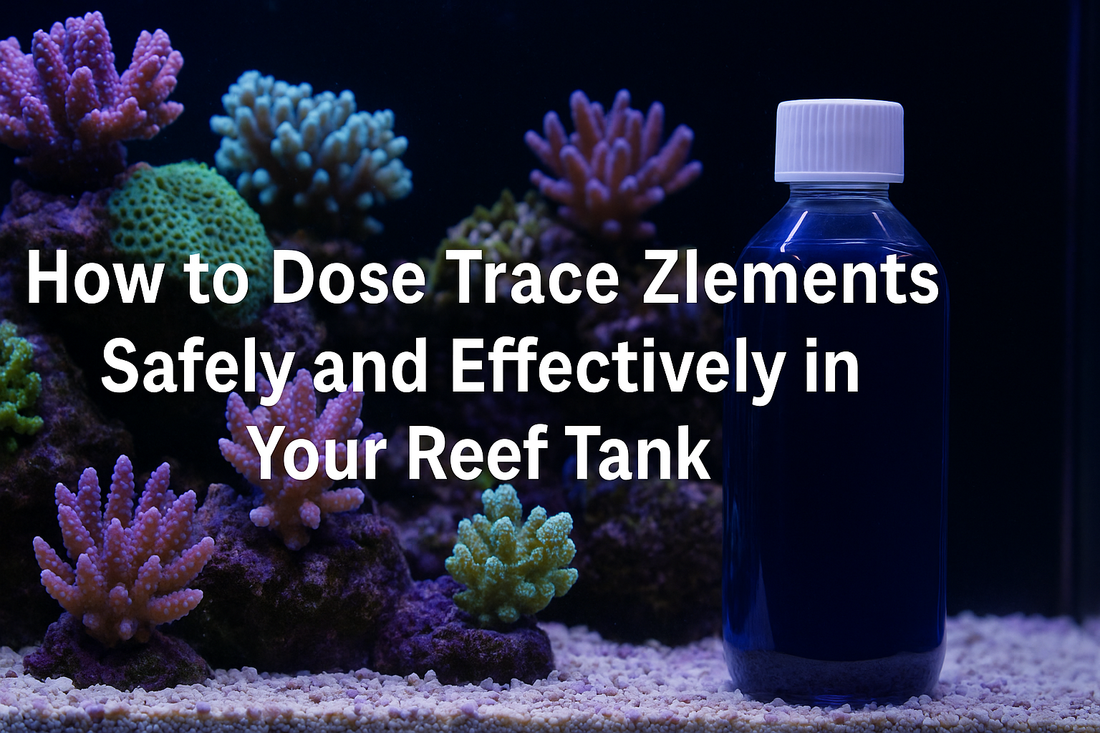In the world of reef aquariums, trace elements may be required in minuscule amounts—but their impact is monumental. From coral coloration and immune response to tissue repair and photosynthesis, these micronutrients support nearly every biological function in your reef system. That’s where Trace Zlements comes in—a precision-formulated supplement line designed to restore and maintain vital trace elements in harmony with natural seawater.
But how do you dose these powerful solutions safely and effectively? In this guide, we’ll cover everything from what trace elements are, why they matter, and most importantly—how to incorporate Trace Zlements into your reef routine without risking overdoses or imbalance.
What Are Trace Elements, and Why Do They Matter?
Trace elements are minerals and metals required in very low concentrations, typically measured in parts per billion (ppb) or parts per million (ppm). They include elements such as:
-
Iodine – Supports coral immune function and tissue health
-
Iron – Crucial for zooxanthellae photosynthesis and coral energy
-
Strontium – Aids in skeletal structure and coral growth
-
Zinc, Manganese, Boron, Cobalt, Nickel – Involved in enzymatic activity, cell signaling, and nutrient transport
While these elements don’t appear on most basic home test kits, their absence or imbalance can lead to dull coloration, slowed growth, and reduced vitality in corals—especially in SPS-dominant or high-demand systems.
Why Choose Trace Zlements?
Trace Zlements is a trusted solution among advanced reef-keepers for its:
-
High purity and bioavailability
-
Laboratory-tested formulations
-
Alignment with ICP test parameters
-
Compatibility with Reef Zlements Complete Dosing systems
Each bottle targets specific groups of trace elements and is color-coded for clarity. When paired with regular ICP analysis, Trace Zlements provides the most accurate and consistent method of maintaining trace stability in your reef.
Step-by-Step: How to Dose Trace Zlements Safely
Step 1: Start with a Baseline – Run an ICP Test
Before adding any trace element supplement, conduct a professional ICP-OES test (like the ones from Reef Zlements). This gives you:
-
A complete elemental profile of your reef system
-
Accurate data on existing trace concentrations
-
A solid foundation for targeted dosing
Never dose trace elements blindly—doing so can lead to toxicity or elemental imbalance.
Step 2: Review Your ICP Test Recommendations
Your ICP report will categorize each element as:
-
Within range (green) – No action needed
-
Slightly low (yellow) – Moderate supplementation recommended
-
Critically low or high (red) – Immediate attention required
Each report includes dosing suggestions in ml per 100L, tailored to your tank’s current volume and element demand.
Step 3: Choose the Right Trace Zlements Products
Reef Zlements splits trace dosing into logical groups:
-
Z-Iron+ – For iron and manganese
-
Z-Iodine+ – For iodine, fluorine, and bromine
-
Z-Strontium+ – For strontium, boron, and associated minerals
-
Z-Trace Mix – A general blend for tanks requiring broad-spectrum supplementation
Based on your ICP results, select the appropriate bottle(s) and prepare for controlled introduction.
Step 4: Calculate the Correct Dose for Your System
Use the following approach:
-
Note your ICP recommendation (e.g., 5 ml per 100L of Z-Iron+)
-
Multiply this by your actual tank volume (excluding sump or rock displacement if preferred)
-
Divide large doses across multiple days to prevent chemical shock
For example, if your 300L tank requires 5 ml per 100L of Z-Iodine+:
-
5 ml × 3 = 15 ml total
-
Dose 5 ml per day over 3 days
Step 5: Dose in a High-Flow Area
Always add Trace Zlements to a high-flow section of your sump or display tank. This ensures proper dispersion and minimizes localized concentration, which could irritate sensitive coral tissue.
Never pour directly onto corals, live rock, or into still areas of your system.
Step 6: Monitor and Re-Test
After dosing:
-
Wait at least 10–14 days before re-testing via ICP
-
Watch for improvements in coral color, polyp extension, and growth
-
Avoid “stacking” additional trace additives unless prescribed by your test report
Do not rely on visual cues alone—many trace issues are invisible until damage is done. Let the data guide your decisions.
Common Dosing Mistakes to Avoid
Overdosing – More isn’t better. Even beneficial elements like iodine or iron can become toxic above certain thresholds. Always follow ICP recommendations.
Guesswork Dosing – Don’t assume your reef needs trace elements just because growth slows or colors fade. Confirm with an ICP test before making adjustments.
Infrequent Testing – Trace elements can fluctuate quickly, especially in high-consumption systems. Plan for monthly ICP tests for consistent dosing guidance.
Dosing All at Once – Large trace corrections should be divided over several days to reduce chemical stress and allow corals to adjust.
Pro Tips for Long-Term Success
-
Recalibrate your dosing pumps monthly if automating trace delivery
-
Keep a reef log to track test results, doses, and visual changes
-
Store bottles in a cool, dark place and shake well before use
-
Use color-coded dosing containers to avoid mixing up solutions
-
Pair Trace Zlements with Reef Zlements ICP Tests and Complete Dosing for a fully integrated reef chemistry strategy
Final Thoughts: Precision Matters in Trace Element Dosing
Trace element dosing is no longer guesswork—it’s a data-driven method to optimize coral health, enhance coloration, and maintain long-term stability in modern reef tanks. With Trace Zlements, you gain a tool that is both accurate and adaptable to your reef’s evolving needs.
By following a controlled, test-guided approach, you’ll avoid the risks of overdosing and unlock the full potential of your reef.



